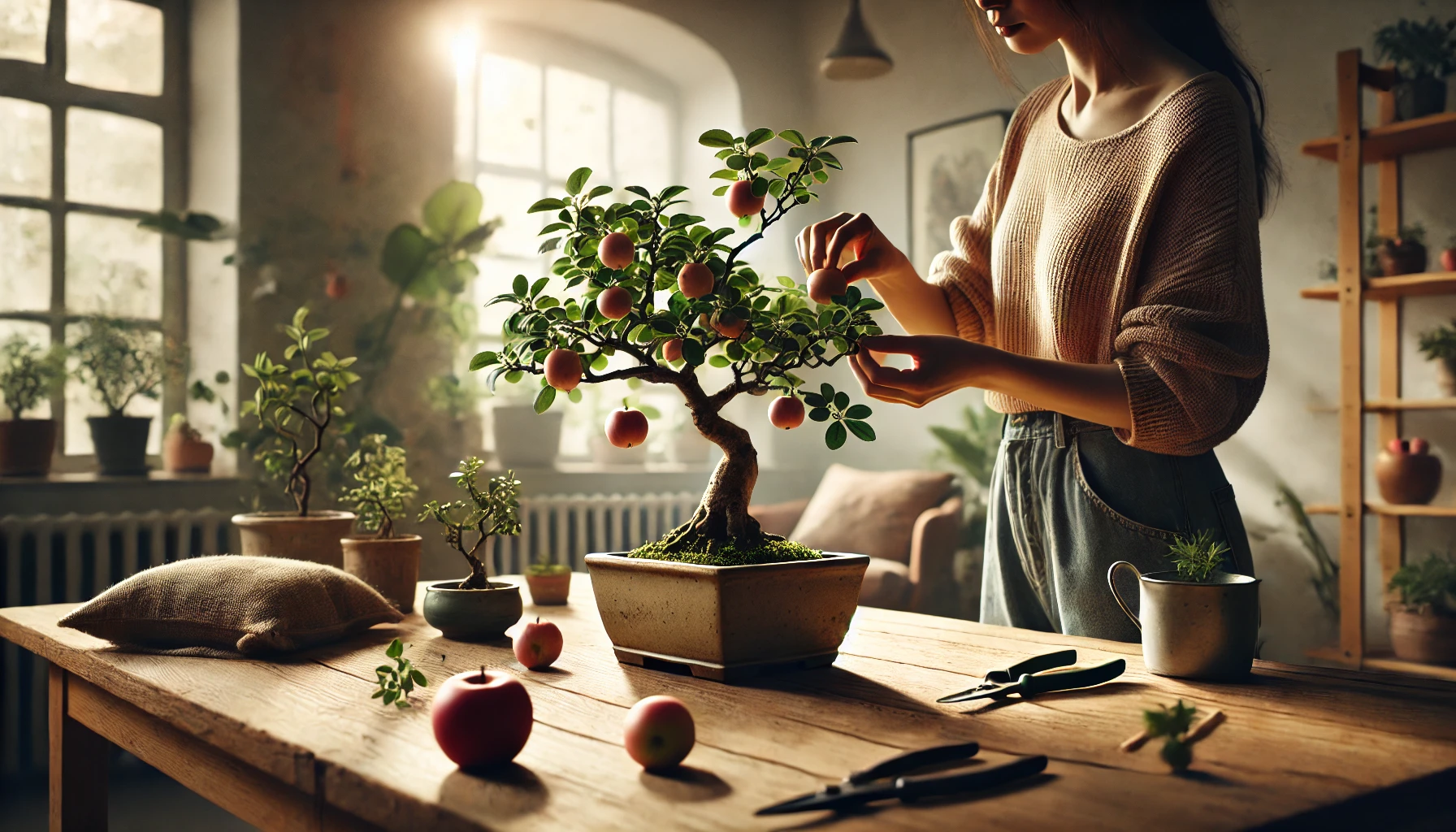Fruiting bonsai trees captivate plant enthusiasts with their miniature size and the charm of real fruits. However, misconceptions often surround their cultivation, leading to confusion for beginners and even seasoned growers. In this article, we’ll debunk common myths and highlight essential facts to help you cultivate a thriving fruiting bonsai.
Myth 1: Fruiting Bonsai Are Just Decorative and Don’t Produce Edible Fruits
Fact: Fruiting Bonsai Can Produce Edible Fruits
A widespread misconception is that fruiting bonsai trees produce artificial or inedible fruits. In reality, these trees are cultivated from real fruit tree species and can yield fruits identical in taste and quality to their full-sized counterparts. The only difference lies in the size of the tree, as the fruits remain proportionally small in some species.
Myth 2: Any Fruit Tree Can Be Turned into a Bonsai
Fact: Not All Fruit Trees Are Suitable for Bonsai
While many fruit trees can be shaped into bonsai, some species are more suitable due to their growth patterns and tolerance to pruning. Dwarf varieties, such as Meyer lemon, dwarf pomegranate, or crabapple, are ideal because their natural characteristics align with bonsai requirements.
Myth 3: Fruiting Bonsai Are Harder to Maintain Than Regular Bonsai
Fact: They Require Similar Care with a Few Adjustments
Fruiting bonsai trees do need specific care to support flowering and fruiting, but they are not significantly harder to maintain. By ensuring adequate sunlight, proper watering, and balanced fertilization, you can cultivate a healthy fruiting bonsai with minimal additional effort compared to non-fruiting bonsai.
Myth 4: Fruiting Bonsai Can Bear Fruits Year-Round
Fact: Fruiting Bonsai Follow Seasonal Cycles
Like their full-sized counterparts, fruiting bonsai trees have natural growth and fruiting cycles. They typically flower and fruit during specific times of the year, depending on the species and climate. Providing seasonal care, such as pruning and adjusting watering schedules, helps optimize these cycles.
Myth 5: You Need Special Fertilizers for Fruiting Bonsai
Fact: Balanced Fertilizers Work Well
Fruiting bonsai trees don’t necessarily require specialized fertilizers. A balanced fertilizer with a good ratio of nitrogen (N), phosphorus (P), and potassium (K) is sufficient. However, during the flowering and fruiting stages, fertilizers with higher phosphorus content can enhance performance.
Myth 6: Fruiting Bonsai Are Too Fragile for Beginners
Fact: Some Fruiting Bonsai Are Beginner-Friendly
It’s a myth that only experienced growers can handle fruiting bonsai. Certain species, such as fig (Ficus carica) and calamondin orange, are hardy and forgiving, making them ideal for beginners. Start with these resilient varieties to build confidence in bonsai care.
Myth 7: Fruiting Bonsai Don’t Require Regular Pruning
Fact: Pruning Is Essential for Health and Aesthetics
Some believe fruiting bonsai trees can thrive without regular pruning. However, pruning is vital for maintaining their miniature form, promoting air circulation, and encouraging healthy fruit development. Neglecting pruning can result in overgrown and unbalanced trees.
Myth 8: You Can Force a Bonsai Tree to Fruit Anytime
Fact: Fruiting Depends on the Tree’s Natural Maturity
A bonsai tree will only fruit when it reaches the right stage of maturity. Trying to rush this process through over-fertilizing or excessive pruning can stress the tree and hinder its growth. Patience and proper care are key.
Myth 9: Fruiting Bonsai Are Only for Outdoor Cultivation
Fact: Many Fruiting Bonsai Thrive Indoors
While outdoor cultivation provides natural sunlight and ventilation, many fruiting bonsai species adapt well to indoor environments. With the right care, such as placing the tree near a sunny window or using grow lights, you can successfully grow fruiting bonsai indoors.
Myth 10: Fruiting Bonsai Are Expensive to Maintain
Fact: They Are Affordable with Proper Planning
The initial cost of purchasing a fruiting bonsai tree or pre-bonsai can vary, but the ongoing maintenance costs are relatively low. Standard gardening tools, regular pruning, and a well-balanced fertilizer are sufficient to keep your bonsai thriving.
Essential Tips for Fruiting Bonsai Success
- Start Small: Begin with beginner-friendly species and gradually experiment with more advanced varieties.
- Be Consistent: Provide consistent care, including watering, feeding, and pruning, to ensure the tree’s health.
- Monitor Growth: Regularly inspect your tree for signs of pests, diseases, or nutrient deficiencies.
- Practice Patience: Fruiting bonsai trees require time and dedication to reach their full potential.
Busting these myths reveals that fruiting bonsai cultivation is accessible to everyone, from beginners to seasoned enthusiasts. With proper care and realistic expectations, you can enjoy the beauty and rewards of growing your own fruiting bonsai.

